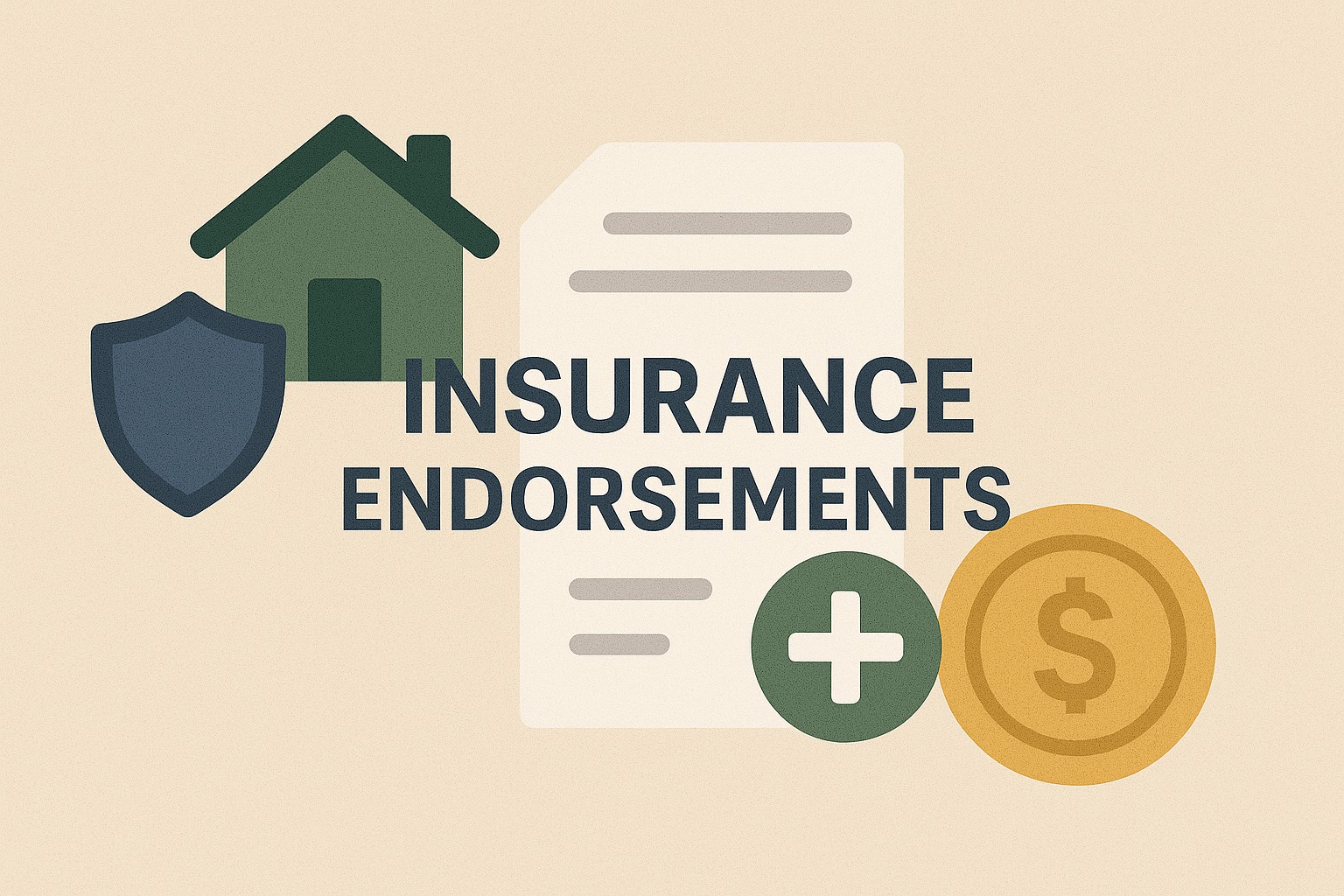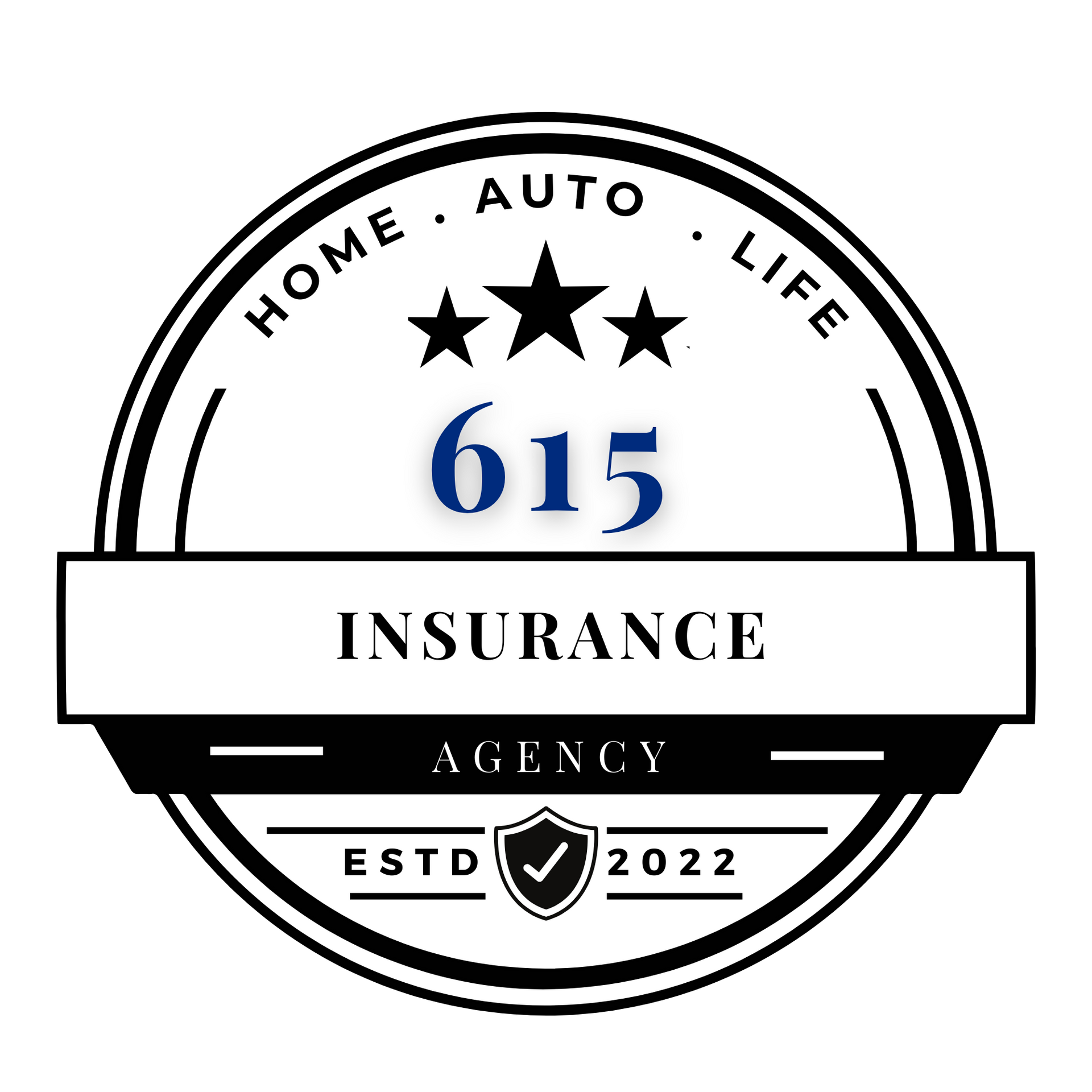lance • July 16, 2025
Why Insurance Endorsements Matter: Customize Coverage for Real Protection
Is It Really That Important?

Insurance is designed to protect you from the unexpected. Whether it’s your home, vehicle, or business, standard insurance policies lay the foundation for financial security. But what many people don’t realize is that these base policies often fall short in covering everything that truly matters. That’s where endorsements come in.
Also known as riders, endorsements are add-ons to your insurance policy that modify or expand your coverage. They allow you to tailor a generic policy to fit your specific needs, lifestyle, and risks. In short, endorsements are the secret weapon of smart insurance planning.
In this blog post, we’ll break down what endorsements are, how they work, and why they’re one of the most important—yet overlooked—parts of an insurance policy.
What Is an Insurance Endorsement?
An
endorsement
is a written modification to your insurance policy that alters its terms, adds or removes coverage, or clarifies ambiguous language. Endorsements can be added when the policy is first written or at any point during the policy term.
You can think of a standard insurance policy as the “starter pack,” and endorsements as custom upgrades. They’re essential for ensuring that your policy keeps pace with your life, your assets, and your financial risks.
Why Endorsements Are So Important
1.
Standard Policies Don’t Cover Everything
Most insurance policies are written for the average consumer. They provide a broad level of protection but often leave gaps—especially for unique, high-value, or evolving needs. Endorsements fill those gaps.
For example:
• A standard homeowners policy may cover jewelry only up to $1,500. If you own a $10,000 engagement ring, you’ll need a scheduled personal property endorsement to fully insure it.
• Your basic auto insurance might not cover rental car reimbursement or roadside assistance unless you add an endorsement.
Without endorsements, you may find yourself underinsured when it matters most.
2. They Offer Flexibility and Customization
One of the biggest benefits of endorsements is flexibility. Life changes. Your insurance should too.
Endorsements let you:
• Add flood or earthquake coverage to your homeowners policy in areas where those risks are not typically included.
• Include home business coverage if you operate a business from your home.
• Add ride-sharing coverage to your auto insurance if you drive for Uber or Lyft.
Instead of shopping for entirely new policies, you can adapt your existing coverage—often at a lower cost than starting over.
3. They Protect High-Value Items and Assets
Certain valuables exceed the coverage limits of standard policies. Whether it’s an art collection, antique furniture, luxury electronics, or high-end tools, an endorsement can ensure those items are properly protected.
Examples include:
• Valuable articles endorsements: Extend coverage for expensive items like musical instruments, cameras, or fine art.
• Equipment breakdown endorsements: Cover major home systems (HVAC, appliances, etc.) if they fail from mechanical issues not covered under standard homeowners policies.
Without endorsements, you could be left with only partial reimbursement—or none at all—after a loss.
4. They Close Critical Coverage Gaps
Sometimes people assume they’re covered for certain events—only to find out the hard way they’re not. Endorsements are vital for closing unexpected exclusions or limitations in your policy.
For instance:
• A typical home insurance policy does not cover sewer or water backup damage. A water backup endorsement fills that gap.
• Identity theft? You’ll likely need an identity fraud endorsement to get reimbursement for legal and recovery expenses.
• Working from home? If you use a personal computer or printer for business purposes, your homeowner’s policy might not cover it unless you add a home office endorsement.
These are risks you can’t afford to ignore—and endorsements let you manage them proactively.
5. They Can Save You Money in the Long Run
While adding endorsements will increase your premium slightly, they often save you thousands in the event of a loss. Paying an extra $50–$200 a year is minimal compared to paying out-of-pocket to replace stolen jewelry, restore a flooded basement, or recover from identity theft.
In the insurance world, being “penny-wise and pound-foolish” can be a costly mistake. Endorsements offer affordable protection for high-cost risks.
Common Types of Insurance Endorsements
Let’s look at some of the most common endorsements and what they do:
Homeowners Insurance Endorsements
• Scheduled Personal Property – Increases coverage limits for valuables like jewelry, fine art, or collectibles.
• Water Backup – Covers damage caused by sewer or drain backup.
• Ordinance or Law Coverage – Pays for upgrades needed to meet current building codes after a loss.
• Home Business Endorsement – Adds limited business property and liability protection for in-home operations.
• Identity Theft – Covers legal fees, credit monitoring, and recovery services.
Auto Insurance Endorsements
• Rental Reimbursement – Pays for a rental car while your vehicle is being repaired.
• Roadside Assistance – Covers towing, flat tires, battery jumps, and other emergencies.
• Gap Insurance – Pays the difference between what you owe on your car loan and the car’s actual cash value if it's totaled.
• Rideshare Coverage – Extends personal auto coverage while driving for companies like Uber or Lyft.
Business Insurance Endorsements
• Equipment Breakdown – Covers repair/replacement of business equipment after electrical or mechanical failure.
• Cyber Liability – Protects against losses from data breaches and hacking.
• Inland Marine – Covers tools or equipment that move between job sites.
• Business Interruption – Pays lost income during periods of downtime due to a covered loss.
Real-Life Scenario: Why Endorsements Matter
Let’s say Lisa owns a home and runs a photography business from her spare bedroom. She has standard homeowners insurance and a basic auto policy. One day:
• A power surge damages her $3,000 camera equipment.
• A client visiting her home trips over her lighting stand and files a lawsuit.
• Her car is totaled in an accident, but she still owes $10,000 more than it’s worth.
Without the right endorsements, Lisa’s claims could be denied or only partially paid:
• No scheduled equipment endorsement = out-of-pocket costs for her camera gear.
• No home business liability = no coverage for the lawsuit.
• No gap insurance = she’s stuck with a $10,000 car loan balance.
With proper endorsements, all these risks could be covered—saving her from major financial setbacks.
When Should You Add an Endorsement?
You should consider endorsements:
• When you buy a new policy
• After major life events, such as getting married, starting a business, or purchasing valuables
• When you review your policy annually
• Any time you acquire something that exceeds standard coverage limits
Insurance isn’t “set it and forget it.” As your life changes, your coverage should evolve too—and endorsements are the tool that make it possible.
How to Add an Endorsement to Your Policy
Adding endorsements is usually straightforward:
1. Contact your insurance agent to discuss your needs.
2. Get a quote for any changes in premium.
3. Sign a policy amendment or endorsement form.
4. Receive confirmation from your insurer.
Keep documentation of what each endorsement covers, and review them annually during policy renewal.
Final Thoughts: Don’t Overlook the Power of Endorsements
Insurance endorsements are more than just optional extras—they're customizable, strategic tools that strengthen your financial safety net. Whether you're protecting your family heirlooms, shielding your side hustle, or closing the gaps in a basic policy, endorsements ensure that you're not just insured, but properly insured.
If you haven't reviewed your policy in a while, now is the perfect time. Sit down with your agent, talk through your assets and risks, and see what endorsements make sense for you. It’s a small step that can make a huge difference when the unexpected happens.

